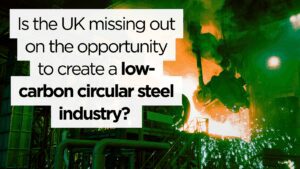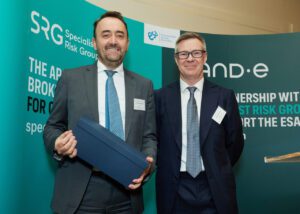Members of Defra’s Circular Economy Task Force today (Wednesday 17th September) convened for a discussion panel at the ESS Expo to discuss the process of creating the UK Government’s Circular Economy Strategy, which is due to be consulted on in Q4 this year.
The panel discussion, which was hosted by the ESA’s Executive Director, Jacob Hayler, featured taskforce members Stuart Hayward-Higham, Wayne Hubbard, Libby Peake and David Greenfield – each of whom are working on a priority sector for the strategy.
As the consultation documents have not yet been published by Government, the task force members remained cagey during the discussion about the content of the strategy but outlined the process of extensive engagement with stakeholders across multiple sectors which has taken place over the past year.
The Circular Economy strategy aims to create a roadmap for six priority sectors while also factoring in several “cross-cutting” themes which will support the transition to a more circular economy (such as finance, innovation, resources and waste management etc).
Daivd Greenfield, said that the Circular Economy Task Force was the first time stakeholders had been invited to “co-develop” a strategy at a national level with Government and that this represented a new approach by Defra – although he said that “lessons had been learned” about the opportunities and limitations about co-development and that Government was a “multi-faceted beast with many different priorities.”
Greenfield said that the task force had engaged with more than 1,000 different organisations to develop its thinking on the Circular Economy Strategy and that this process “isn’t just about how we can recycle our way out of the problems we have, but how we can move to systems-thinking and redesign for the future” with the circular economy in mind.
He said: “A lot of the engagement we’ve had has been beyond resource management – for example with the design community. We’ve been speaking to multi-nationals, major construction companies, and organisations like Amazon and Jaguar Land Rover. They see this as the future for them as well. We’re looking at how this [Circular Economy Strategy] can align with EU polices and regulation and we want it to be a business, growth and jobs focussed strategy – recognising that businesses have to be able to compete in the UK and Europe.”
Libby Peake, who is working on the Built Environment sectoral workstream, outlined the significant use of materials in the construction sector, which is responsible for nearly two thirds of waste produced in the UK. Peake said that the construction sector recognises that it needs to change, and knows how to change, but isn’t getting the right policy drivers from Government – for example through government spending power and procurement at all levels and across all departments.
Wayne Hubbard said that it was important that the strategy is not viewed as being about waste, and that the task force has looked at how circular economy solutions can contribute to growth and resilience; how it can contribute to reducing the cost of living; and what it could mean for cities and communities.
He said: “We’ve not approached this with a bin-first mentality. For example, on textiles, we’ve taken the view that there are too many clothes produced, not that people buy too many clothes. You need a healthy, well-supported, financed, circular economy business sector designing and implementing business models in their communities – rather than just looking for unicorns.”
Stuart Hayward-Higham emphasised the importance of considering the transition to circular economy business models. He said: “There’s no point going bust before we get there, so the key thing is to bring a business focus to the journey.”
Hubbard said that, from speaking to small and medium sized businesses, they have struggled to attract finance for circular economy business models, and that the complexity of integrating front-end and back-end introduced compound risk for financiers. He said: “Speaking to venture capitalists though, they tell us that if the business case stacks up, there is no problem. However, when we explore that, it’s clear that the business case must be based around the linear economy.”
Furthermore, Hubbard explained that financiers increasingly demand to see Artificial Intelligence (AI) as a component of business plans. He said: It’s becoming a self-fulfilling prophecy that AI has to be a really important part of the business case.”
Hubbard also said that senior people within Government have offered to champion the Circular Economy Strategy, but the movement towards ownership and adoption wont be “revolutionary” but will instead progress with “small steps”. He said: “For Defra to go tell Rachel Reeves she needs to transform the whole economy, that a tough conversation to have.”
Earlier this year, the ESA published its own Circular Economy Vision 2040 report setting out the interventions it believes are required to define and achieve a circular economy by 2040. You can view and download the report here.




